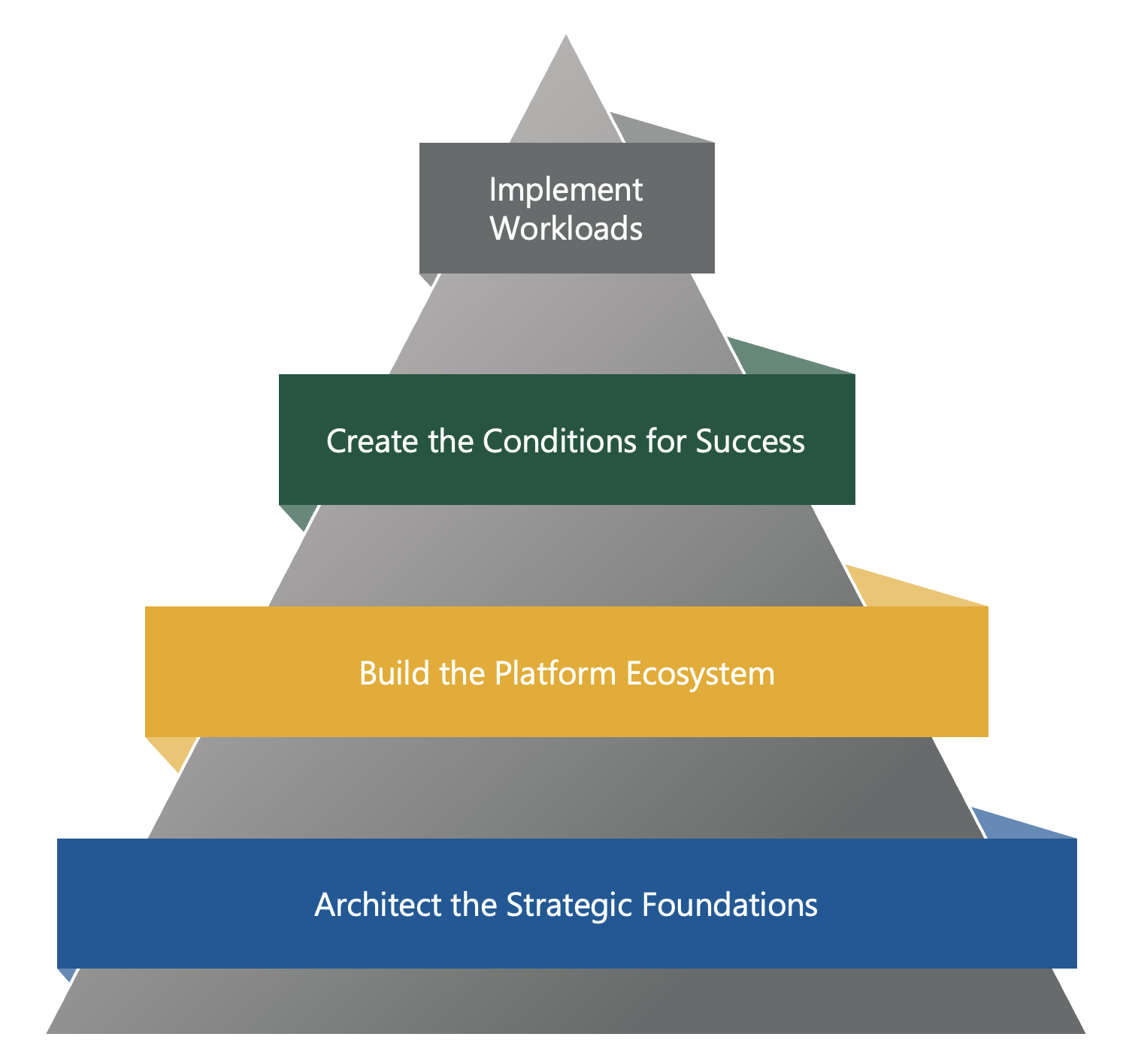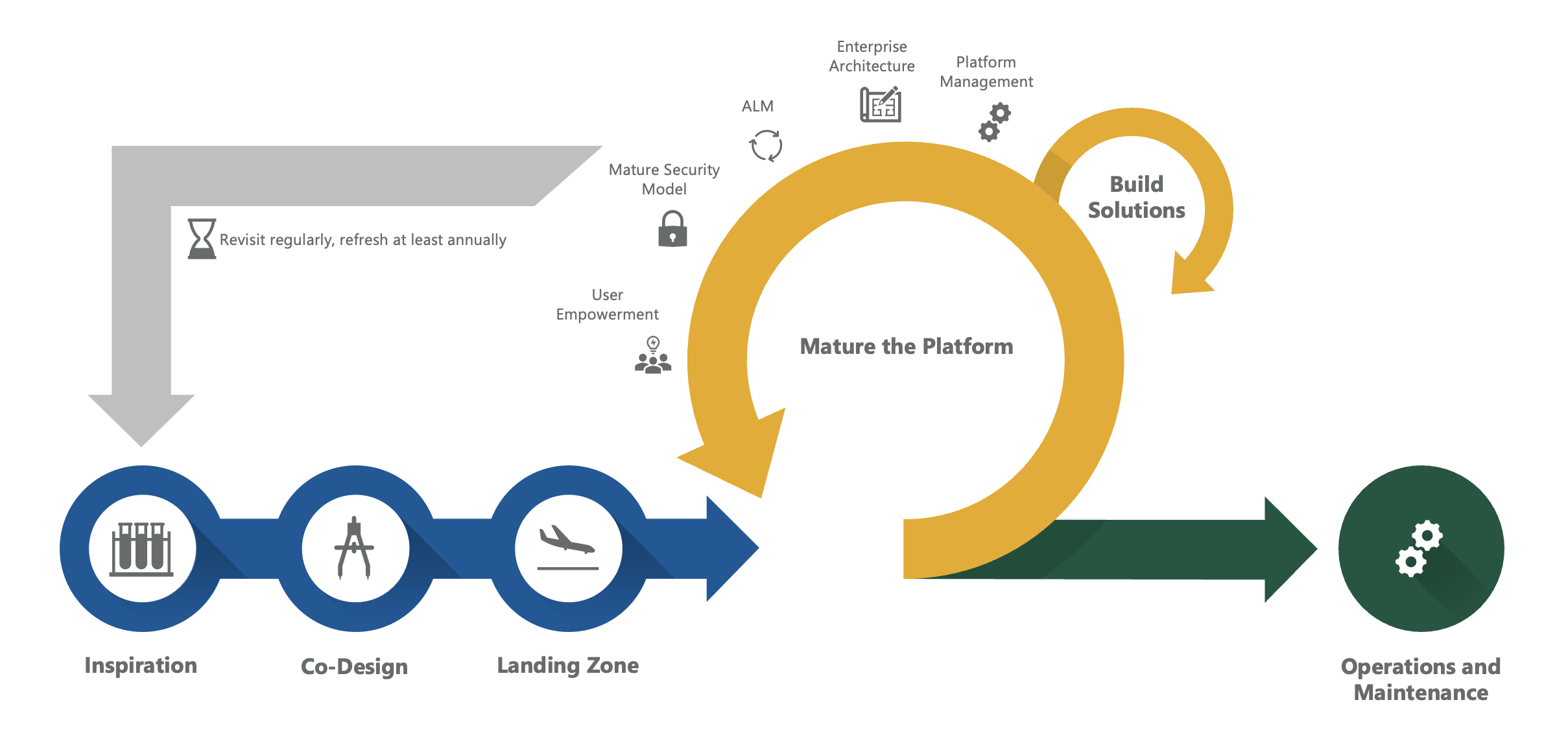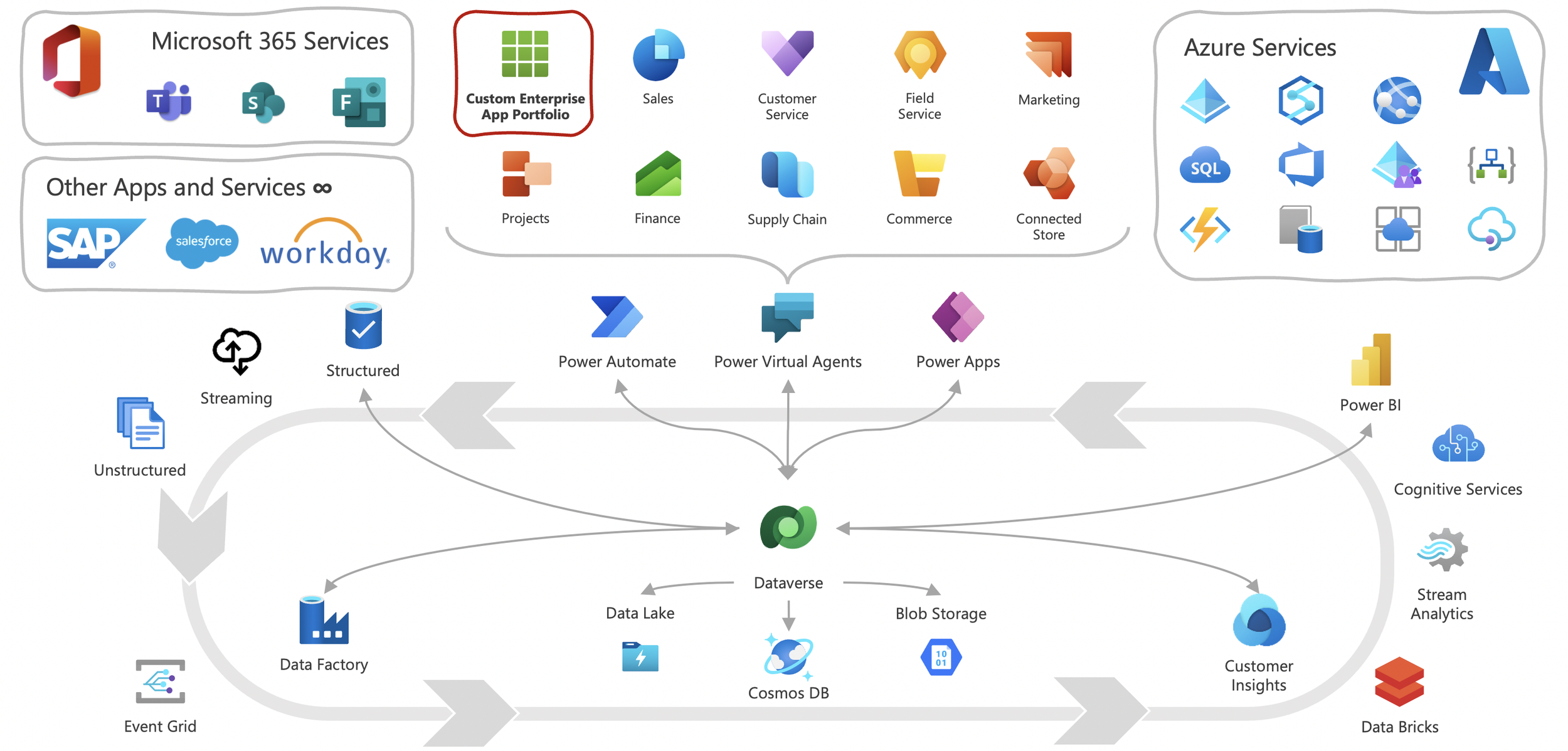
Understanding cloud ecosystem value and architecture via a “strategic pyramid”
Let’s consider a model for how organizations should be prioritizing their work and investments in the Microsoft Cloud. The imperative here could not be greater. Technological advancements are now moving on timelines that in some instances can be measured in weeks. Not months. Not years. But weeks. This both accelerates and is accelerated by the shift to system-based value. In other words, getting the platform ecosystem right in an organization is both necessary to creating the greatest likelihood that the organization can absorb rapid innovation, whilst simultaneously creating the conditions that drive that rapid innovation forward. But too many organizations have misallocated their focus up and down the value chain, prioritizing workload implementation either at the expense of or out of ignorance to architecting strategic foundations, building the platform ecosystem, and creating the conditions for success. That’s a bit esoteric, so let’s visualize this phenomenon as the “strategic pyramid”…

Strategic thinking for the Microsoft Cloud
I have come to understand strategic thinking as more art than science. Strategy is surely informed in part by data, but I find that our society in general and the technology industry specifically too often confuse data and wisdom, that we foolishly (though understandably) seek heuristics or processes so that we can turn the art of strategic thinking into a game of color by numbers so simple that anyone can do it. When it comes to strategic thinking, better that we seek methods of framing our thoughts rather than shortcuts to the answers themselves. So in this piece I have sought to offer practical approaches to injecting strategy into your organization’s Cloud journey, indeed, a selection of the same approaches I take with my clients.

The Cloud Application Platform Era is a seismic, generational transition for cloud technology
We are experiencing a seismic, generational transition in the way that organizations buy, use, and enable their own success via technology. We’re now living in the Cloud Application Platform era, wherein organizations plan more strategically, make technical choices today that reduce the risk of being painted into a corner tomorrow, absorb new requirements rapidly, better fix costs across their ecosystem, and buy down the risk of unknown future needs. That’s what the Cloud Application Platform is all about.

Power Platform is a First Class Citizen in the Cloud Transformation + App Modernization journey
That’s what low-code cloud transformation and app modernization is really about: Harnessing the “65% Opportunity” with Power Platform as a first-class citizen for business applications amongst Microsoft’s “Three Clouds”. So what's driving this? And — perhaps more importantly — how do we do this at scale? How do we migrate one, two, or ten thousand workloads to Power Platform?

